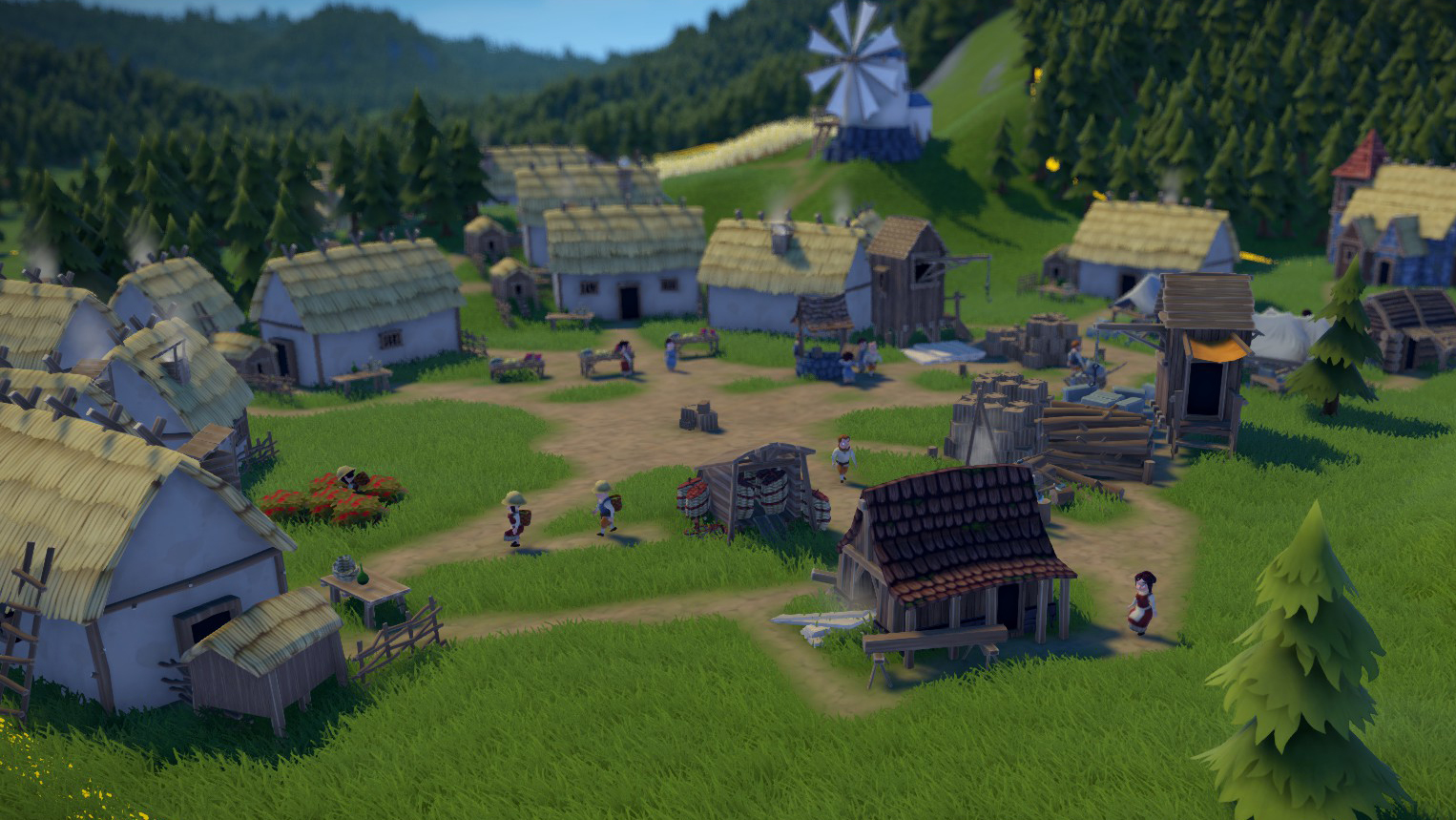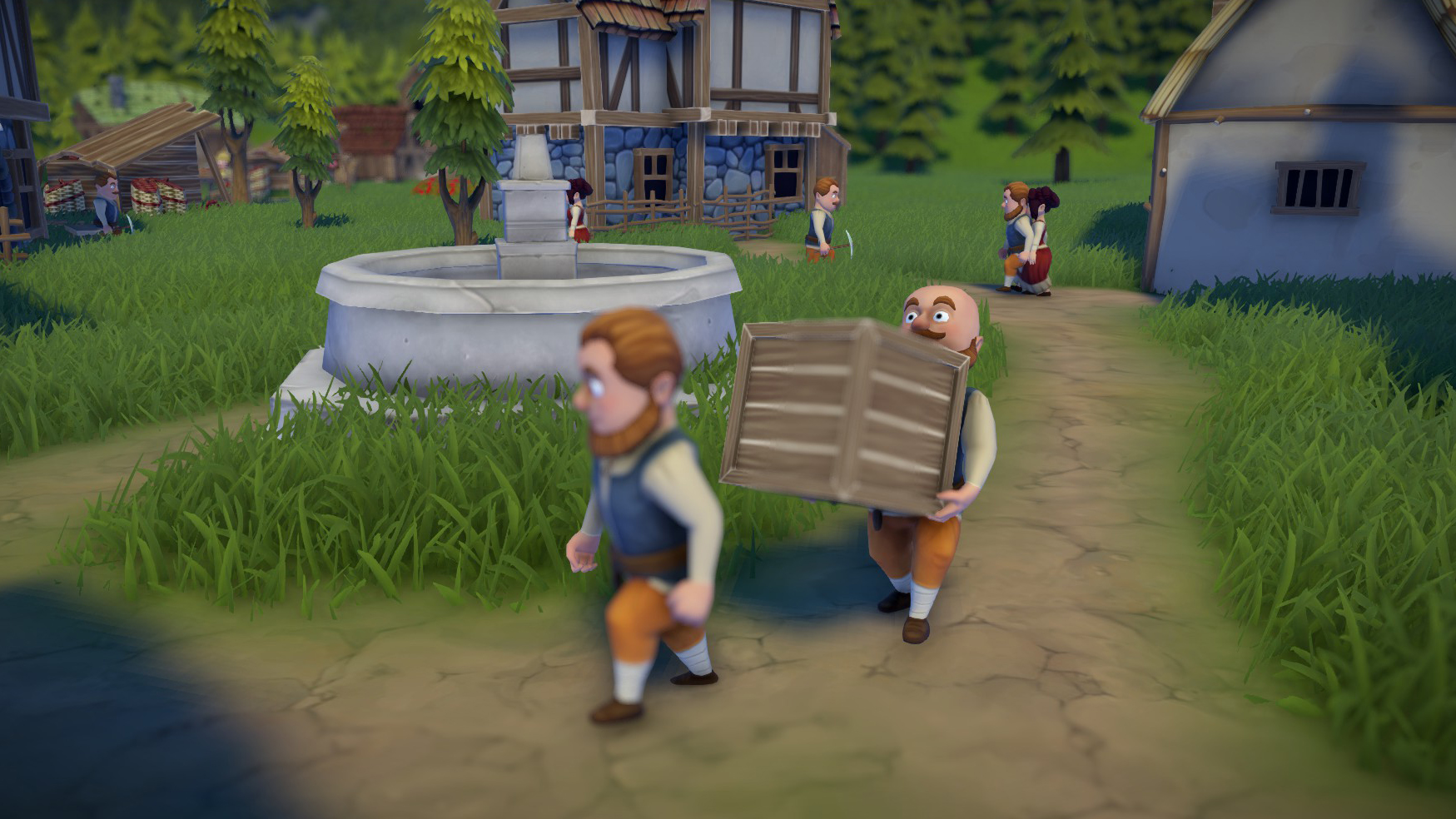You don't have to place roads in this medieval city-builder, thanks to your citizens' feet
Foundation's fun is in watching your village take shape, sometimes without your help.
When I started playing Foundation, an Early Access medieval city builder, I spent most of my time frowning in confusion. There's a help feature with some basic instructions but no real tutorial. There's a ton of drop-down menus about trading and stockpiling I didn't understand. There were quests I had no idea how to complete. I really couldn't tell what I was doing. All I could figure out was that my handful of tiny citizens were extremely unhappy. After about 20 minutes, I figured I'd just close the game and wait for Foundation to leave Early Access with (hopefully) a proper tutorial to give me a clue.
Then I noticed something. Unlike most city-building games, you don't draw roads in Foundation. The villagers make their own roads. As they walk back and forth across the grass, they wear it down until a dirt path appears. It's fun to watch it happen as they go about their routines: the tiny serfs creating their own boulevards and avenues, giving shape and structure to the town simply by how they walk through it. Above is an edited 3X speed clip of what happens when I tell my builders to construct a market table in the grass.

How darn cute and cool is that? And this was really all it took. I stuck with it and played it all weekend, got the hang of how (most) things work, and I'm deep into Foundation now.
Foundation is a gridless city-builder. You place most buildings yourself wherever you want. Monuments like churches, forts, and town markets have pieces you can snap together, making it a mostly free-form building system. And when it comes to villagers, they manage their homes like they manage their roads, without help from you. You paint zones for residential construction, but they do the placing and building on their own. It's messy, definitely, and my town looks pretty chaotic as a result, but like the dirt roads there's something nice about letting these itty bitty citizens sort of design their own town. Some of them seem to want their houses smooshed right up against their neighbors. Who am I to argue?

Food, naturally, is a priority, and at first my citizens were on an all-berry diet. I built a gathering hut, then assigned a few villagers as foragers. They pick berries all day, and then those berries can be sold at market: food for them, profit for you. Later I was able to build a wheat farm and assign some farmers, grind the wheat into flour at a windmill, then use the flour to bake bread. For other resources, you can open trade routes to three other cities for things like fish (I foolishly chose to build on a map with no water) and other goods.
Of course there are trees that need to be chopped, what with all the building you're doing, and I found my forest depleted pretty quickly. Another lovely feature helps: you can assign a villager to replant trees if you can't afford to buy more land, or if you just don't want your lumberjacks to have to go too far to find more wood. While I'm chopping a forest down I've got another one growing.

The longer people live in your village, the more their needs increase as they grow from serfs into citizens. They'll want better food and nicer homes (they upgrade their houses by themselves) and new clothing. They also want religion. Building a church gives them a place to pray (probably for food besides berries and water) and adding to your church means more villagers can attend services. A bigger church also contributes to "Splendor," which unlocks new building types.
Keep up to date with the most important stories and the best deals, as picked by the PC Gamer team.
Splendor comes into play with your unseen king as well as your villagers. Building a fort and staffing it with soldiers pleases your king, while a big and well-decorated marketplace makes your citizens feel splendid. My newest unlocked building is a hunting camp, so now I've now got one little citizen killing deer for leather and meat, giving my people something new to eat (I haven't yet figured out what I can do with the leather).

There are still some things I'm trying to work out. Occasionally I find I've got plenty of wheat grown and stored but my windmills still aren't producing much flour, meaning I've got a shortage of bread, and I'm not sure why. A few other resource systems wind up with odd gaps from time to time, like having tons of wood but no planks being made in the sawmill. Maybe it's some Early Access problem, maybe I am just not quite grasping my supply lines, or maybe my workers are living too far from their jobs to be efficient. I'll have to keep tinkering.
Confusion and questions aside, I'm having a really nice time with Foundation. It's on Steam, and isn't exactly inexpensive ($30/£26.99), and could be in Early Access for another year or longer, so keep that in mind. I found the Foundation wiki helpful in explaining a few of the game's systems.

Chris started playing PC games in the 1980s, started writing about them in the early 2000s, and (finally) started getting paid to write about them in the late 2000s. Following a few years as a regular freelancer, PC Gamer hired him in 2014, probably so he'd stop emailing them asking for more work. Chris has a love-hate relationship with survival games and an unhealthy fascination with the inner lives of NPCs. He's also a fan of offbeat simulation games, mods, and ignoring storylines in RPGs so he can make up his own.

